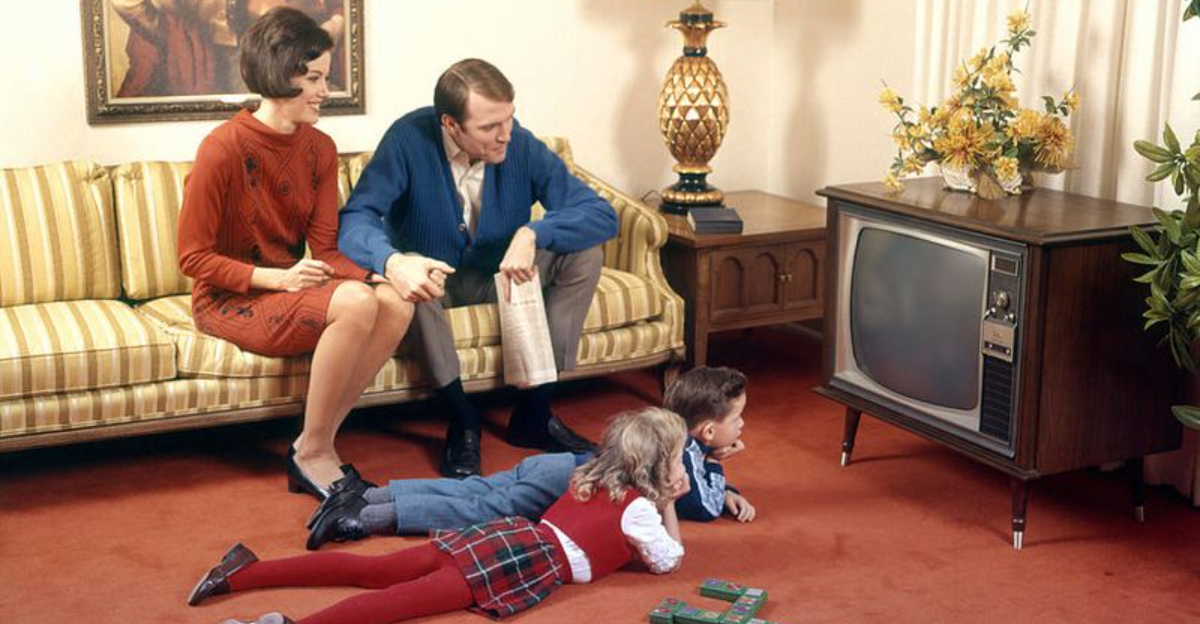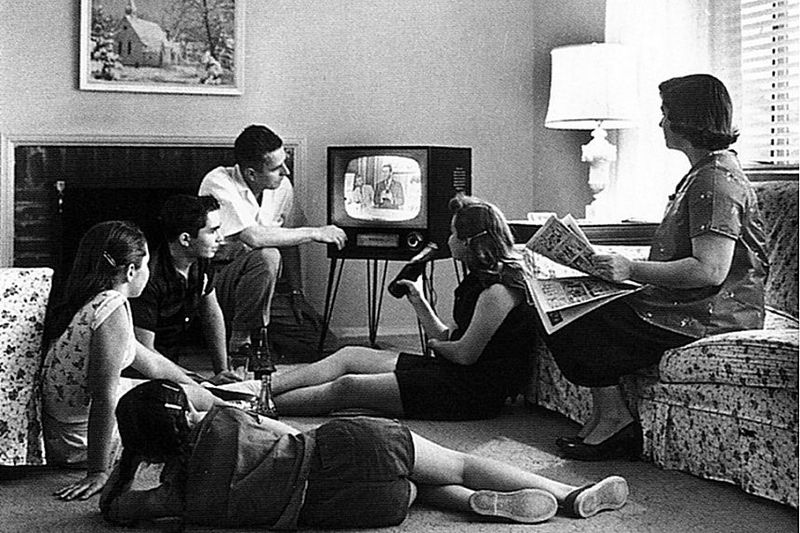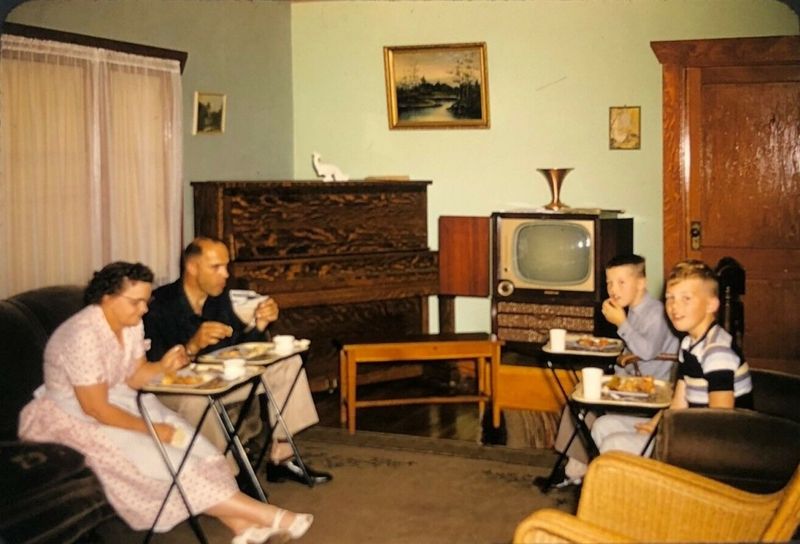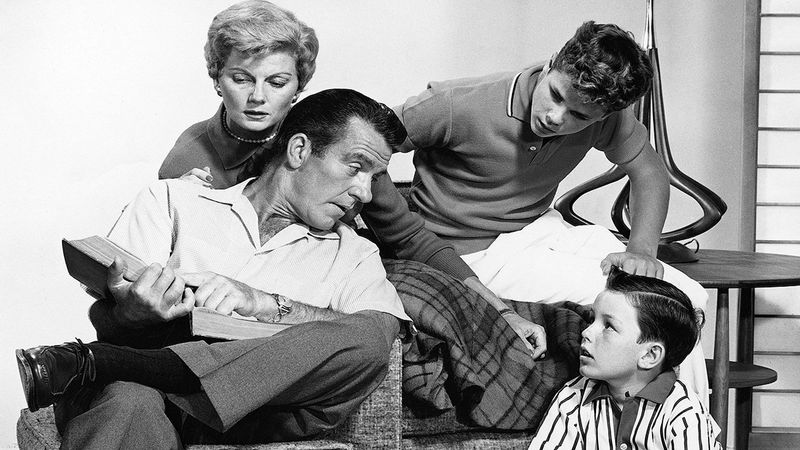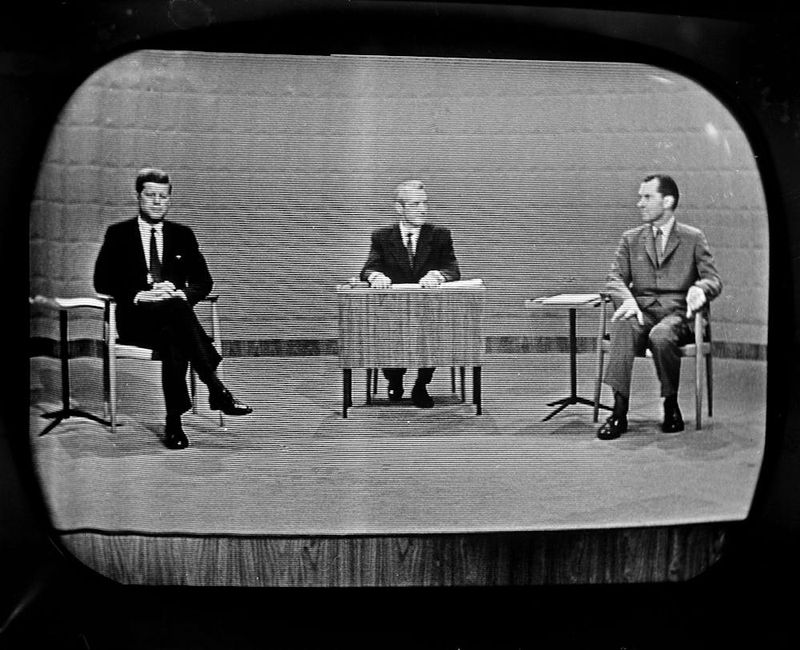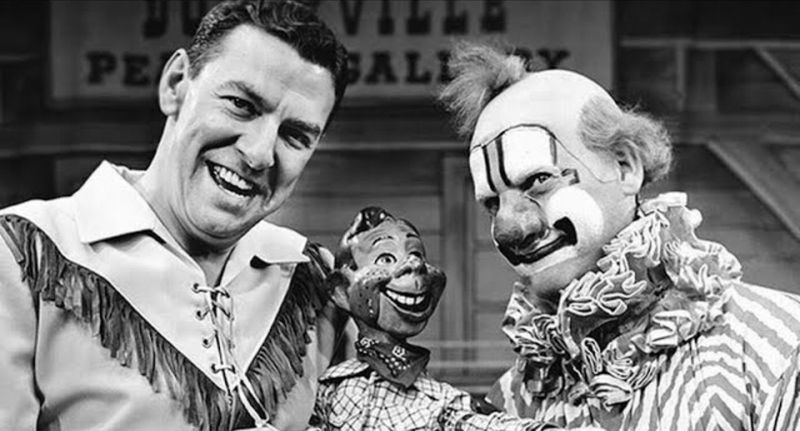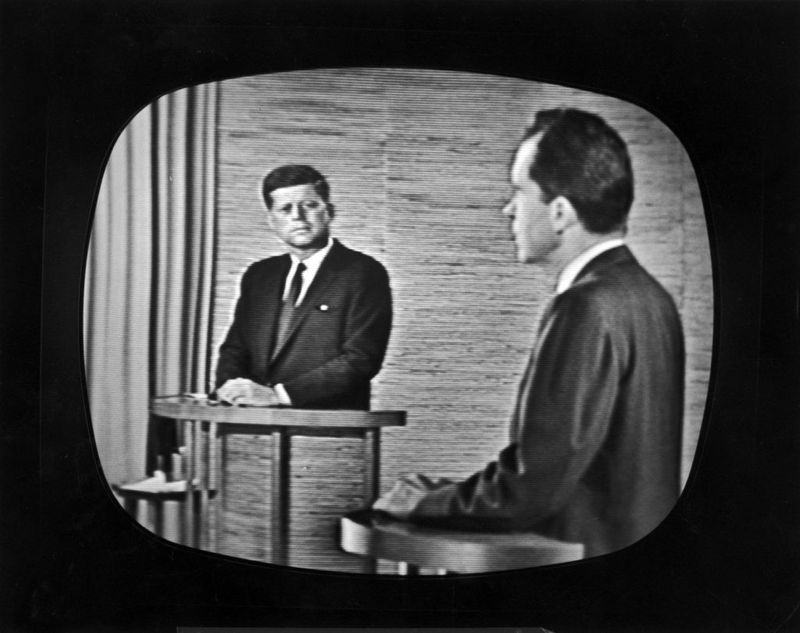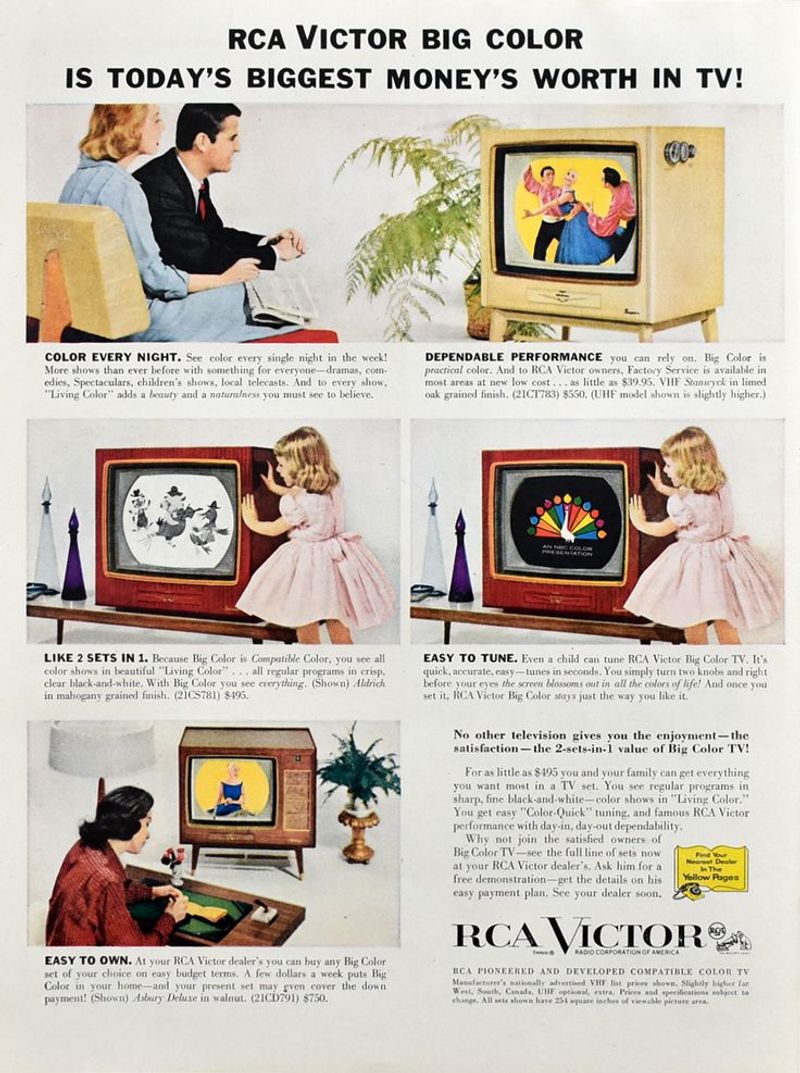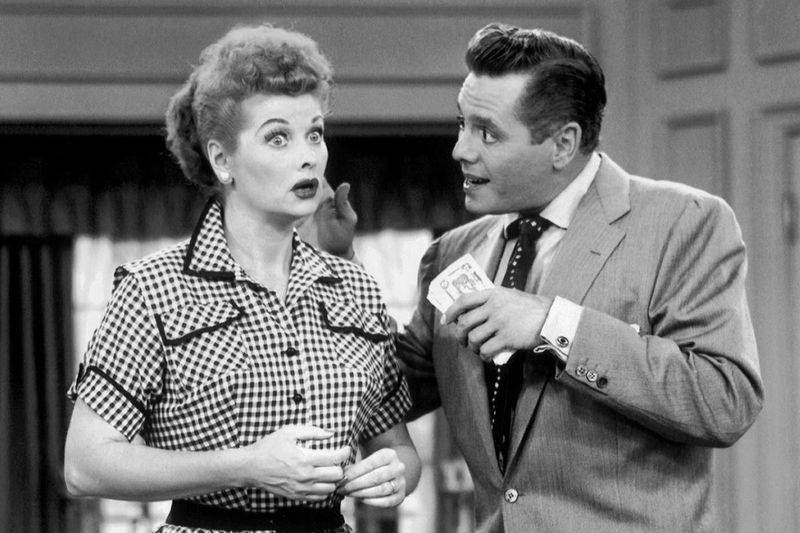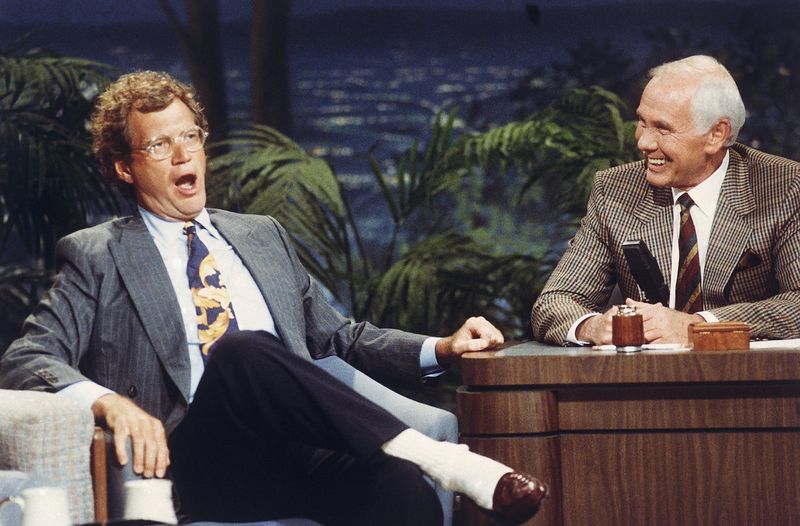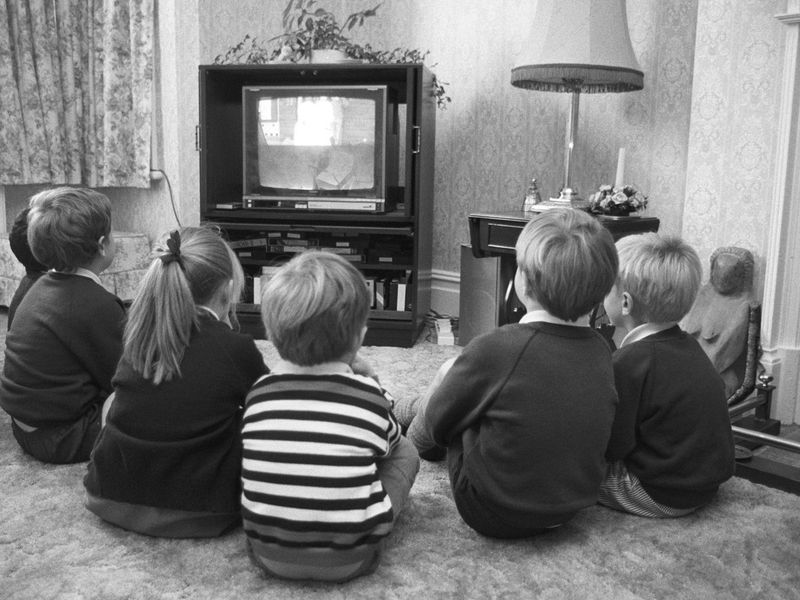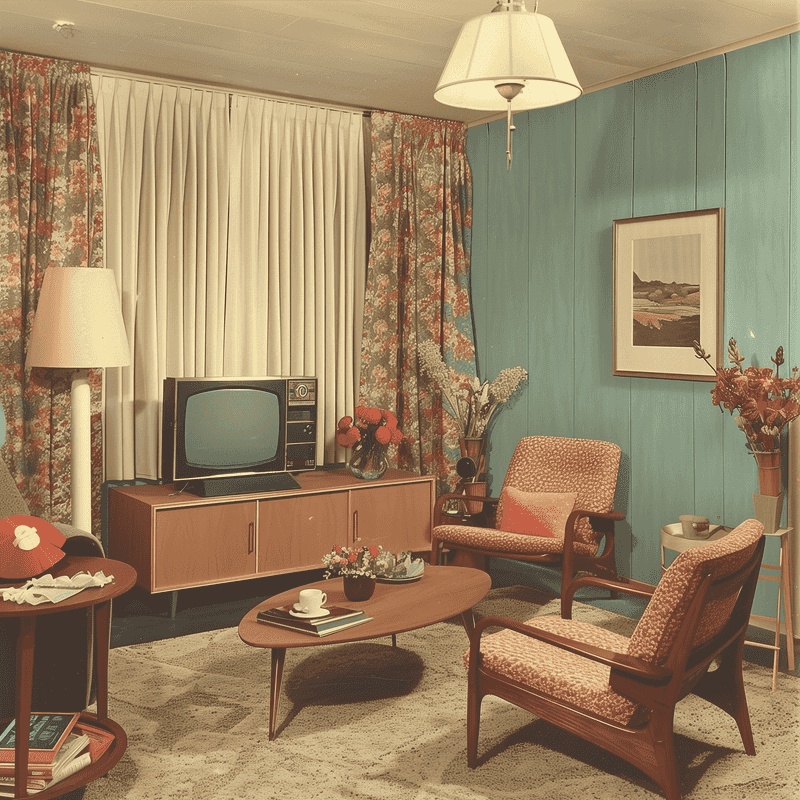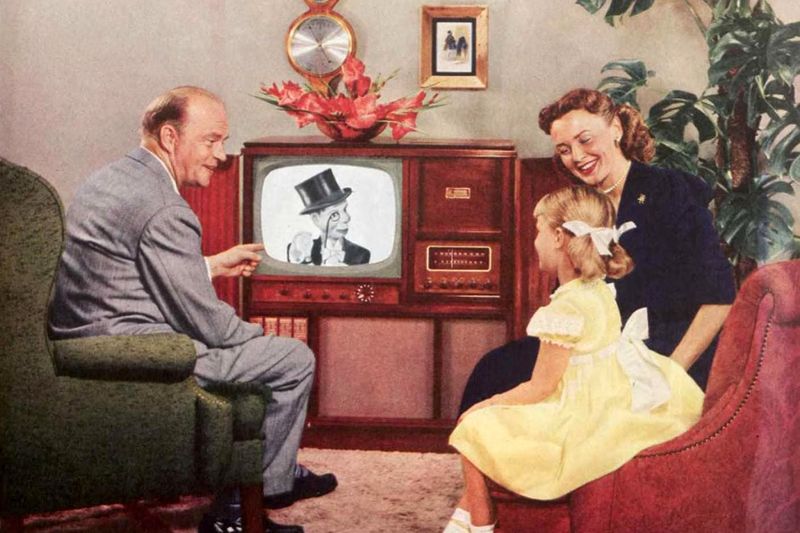Television’s arrival in American homes marked a cultural shift that would redefine family life and societal norms.
As the glowing box moved into living rooms, it became a new focal point for family gatherings, reshaping everything from dinner routines to entertainment preferences.
This article explores 15 key ways television has left an indelible mark on American households, transforming traditions and uniting people across the nation.
1. Families Gathered Around a New “Hearth” — The TV Set
In the 1950s, the television set replaced the fireplace as the heart of the home. Families gathered after dinner, creating new traditions around the glowing screen. The television gave families a shared experience, fostering a sense of togetherness.
As programs aired, people of all ages sat side by side, laughing, learning, and discussing what they watched. The TV set became a symbol of the modern American household, inviting both connection and conversation into the evening routine. This shift marked the beginning of a new era in family dynamics and entertainment.
It redefined the concept of home life.
2. Dinner Time Shifted to “TV Dinners”
The invention of the TV dinner revolutionized family meals in the 1960s. Convenient frozen meals served on trays enabled families to dine in front of the television screen. This new practice transformed the traditional dining experience, allowing for more informal and flexible mealtimes.
As families ate together, the television provided entertainment and conversation starters, bridging the gap between different generations. TV dinners became a cultural phenomenon, symbolizing the intersection of technology and daily life.
The convenience of eating in front of the TV became a hallmark of the era, altering how families interacted during meals.
3. Shared Viewing Meant Shared Values
As families watched shows like Leave It to Beaver, a new cultural narrative emerged. These programs depicted idealized visions of family life, promoting traditional values and societal norms. Through shared viewing experiences, American families absorbed these ideals, shaping their own perceptions of morality and lifestyle.
Television provided a platform for families to discuss and reflect on their own beliefs and aspirations. By aligning with the values portrayed on screen, families found common ground in a rapidly changing society.
This shared viewing experience laid the foundation for unified cultural values across diverse American households.
4. Live Broadcasts Made News Immediate
With the advent of live television, news reached American families in real time. People witnessed historic events as they unfolded, from presidential speeches to moon landings. This immediacy transformed how families engaged with current events.
Gathered around the TV, families became more informed and connected to the world. The shared experience of watching history unfold brought excitement and conversation into living rooms nationwide.
Television news changed the landscape of information consumption, bridging gaps in understanding and fostering a more informed citizenry. It emphasized the role of media in shaping public perception and knowledge.
5. Children’s Programming Created the First Generation of TV Kids
Children’s programming in the 1950s and 60s gave rise to the first “TV kids.” Shows like Howdy Doody and Captain Kangaroo captivated young audiences, creating a new form of entertainment tailored specifically for children.
Saturday mornings transformed into a dedicated time for kids to enjoy their favorite programs, instilling routines and preferences that would last a lifetime. Through these shows, children learned valuable life lessons and developed a sense of belonging to a broader community.
Television became an integral part of childhood, shaping imaginations and influencing future generations’ cultural experiences and expectations.
6. The First Televised Presidential Debate Changed Politics Forever
The 1960 Kennedy-Nixon debate marked a turning point in political history. Televised debates brought politics into living rooms, emphasizing image alongside policy.
For the first time, voters could assess candidates based on their television presence, altering election dynamics. The debate showcased the power of media, influencing public perception and voter behavior.
Families discussed and debated political issues together, fostering civic engagement and awareness. The televised debate changed the landscape of political campaigning, setting the stage for media-driven elections in the years to come.
7. Advertising Invaded the Living Room
The rise of television advertising in the 1950s transformed consumer culture. Slick commercials entered living rooms, capturing attention and shaping purchasing decisions.
Families were introduced to new products and brands, creating a nation of informed consumers. The television became a powerful tool for mass marketing, influencing trends and preferences.
Advertising changed the landscape of entertainment, blending commerce with culture. It paved the way for brand loyalty and the age of consumerism, making the living room a central hub for marketing and consumption.
8. Local and National Identity Were Shaped Together
Television unified American culture by broadcasting the same programs nationwide. Whether in rural towns or bustling cities, families watched similar shows, fostering a sense of shared identity and experience.
Television bridged regional differences, creating a standardized cultural narrative. It brought diverse communities together, promoting understanding and cohesion.
The medium played a pivotal role in shaping both local and national identities, reflecting and reinforcing American values and ideals across the country. Television became a cultural touchstone, uniting people from coast to coast in a collective viewing experience.
9. Popular Shows Became National Events
In the 1950s, popular television shows like I Love Lucy became national events. Entire neighborhoods paused their activities to watch together, creating a communal viewing experience.
Television fostered social bonds and provided a shared cultural touchstone. Families and friends gathered to laugh, cry, and discuss the latest episodes, creating lasting memories and traditions.
These shared moments reinforced the role of television as a unifying force, bringing people together in a rapidly changing world. Popular shows bridged generational gaps, allowing diverse audiences to connect through entertainment.
10. Late-Night TV Created New Family Routines
The emergence of late-night television changed family routines in the 1970s. Shows like The Tonight Show extended evening entertainment, keeping families up late into the night.
Television became a part of bedtime routines, offering relaxation and laughter before sleep. Parents and older children gathered for a different kind of shared experience, distinct from daytime programming.
This shift in viewing habits altered family dynamics, as screen time became an integral part of daily life. Late-night TV created a new tradition, blending entertainment with leisure in a novel way.
11. Television Became a Parenting Tool
Television emerged as an “electronic babysitter” in the 1970s, providing parents with a tool to occupy children while managing other responsibilities.
Parents found relief in knowing their kids were entertained and safe in front of the screen. Children’s programming offered educational content, making TV a valuable resource for learning and development.
This new role of television changed parenting dynamics, offering both convenience and challenges. While freeing up parents’ time, it also raised questions about screen time and its impact on young minds. Television became a double-edged sword in modern family life.
12. Racial and Cultural Representation Lagged Behind
Early television often failed to represent the diverse fabric of American society. Shows predominantly featured white families, excluding minorities and reinforcing a narrow view of the American experience.
This lack of diversity shaped perceptions and stereotypes, influencing how viewers understood race and culture. Television’s portrayal of family life did not reflect the realities of many American households.
This oversight sparked conversations about representation and equality, highlighting the need for more inclusive programming. Efforts to diversify television content continue to evolve, aiming to accurately reflect the nation’s rich cultural tapestry.
13. Furniture Design Changed Around the Screen
The arrival of television influenced furniture design and living room layouts. In the 1950s, TVs were often built into wooden cabinets, becoming a focal point of home decor.
Living rooms were arranged to optimize viewing, with seating oriented towards the screen. This shift in design priorities underscored television’s importance in daily life.
The TV set dictated the arrangement of furniture, blending entertainment with aesthetics. As technology evolved, so did design trends, reflecting changing tastes and the integration of television into modern home environments.
14. Real-Time Sports United Fans Coast to Coast
Television transformed sports into shared national events. Families could watch live broadcasts of games, uniting fans across the country in real time.
Whether it was baseball, football, or boxing, televised sports became a staple of American culture. Fans gathered around the TV, experiencing the thrill of competition together.
This shared enthusiasm fostered a sense of community and national pride, bringing together diverse audiences. Television made sports accessible to all, enhancing its role in American society and reinforcing the cultural significance of athletic events.
15. It Set the Stage for the Media Age
The introduction of television marked the beginning of the media age, laying the foundation for a new era in communication and entertainment.
What started as a novel addition to the living room evolved into a powerful cultural force, shaping modern American life. Television influenced everything from news consumption to social norms, driving innovation and change.
The medium set the stage for future advancements in media technology, connecting people in unprecedented ways. As the cornerstone of the media age, television forever altered the landscape of information and entertainment, heralding the dawn of a new cultural epoch.
